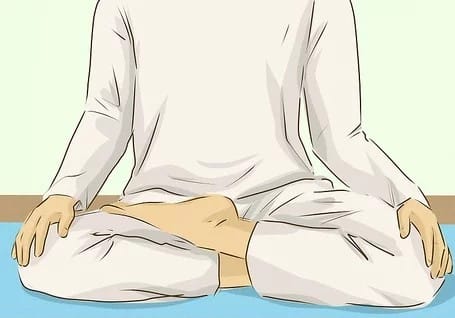
Informative
Zazen Meditation for Beginners
Have you ever seen those serene images of Buddhist monks meditating in remote monasteries, seemingly untouched by the chaos of the world? Seems unreal and difficult to achieve right? How do they cultivate such inner peace and tranquility amidst the hustle and bustle of everyday life? The answer lies in a practice called Zazen meditation.
In a world filled with constant distractions and overwhelming demands, Zazen meditation offers us an opportunity to pause, reconnect with ourselves, and discover a sense of inner peace that extends far beyond the cushion. It helps us cultivate mindfulness, reduce stress, and gain clarity amidst the chaos of our modern lives.
Inspired by the serene practices of Buddhist monks, we invite you to join us as we unravel the secrets of this ancient form of meditation and discover how it can bring a sense of calm and clarity into our own lives. Let’s begin!!!
What is Zazen Meditation?
Zazen, a word of Japanese origin, means “seated meditation.” It is a practice deeply rooted in the teachings of Zen Buddhism, a spiritual path that encourages us to awaken our true nature. Through Zazen meditation, we learn to embrace the present moment, letting go of worries about the past or future.
How to Begin?
Posture and Zafu
Imagine, for a moment, the image of a seated Buddha. This is the most effective posture for Zazen meditation. While sitting on the floor is recommended, as it provides a grounded and stable foundation, we also use a small pillow called a zafu. The zafu raises the pelvis and hips slightly, allowing the knees to touch the ground. In this way, we create a tripod base that feels natural, grounded, and stable.
As we settle into this posture, we become attuned to the subtle sensations in our bodies. We notice how the spine gently aligns, supporting an upright yet relaxed position. We bring our awareness to our breath, observing its natural rhythm. With each inhalation and exhalation, our body and mind harmonize in a dance of interconnectedness.
One common sitting style is called Kekkafuza, also known as the full-lotus position. In this posture, both legs are crossed, with each foot resting on the opposite thigh. Another option is Hankafuza, the half-lotus position. Here, one foot rests on the opposite thigh while the other foot rests on the floor. Burmese style is yet another option. It involves crossing the legs in a simple cross-legged position, with the ankles placed together in front of us. Seiza is a kneeling posture that utilizes a bench or a cushion called a zafu. It offers a different way of sitting, where we place ourselves in a kneeling position supported by the bench or zafu.
Steps for practicing Zazen meditation:
Find a quiet space where you won’t be disturbed.
Choose a comfortable posture, sitting with a straight back.
Gently close your eyes or keep them softly focused.
Focus on your breath, feeling the rise and fall of your abdomen or the air passing through your nostrils.
Observe your thoughts without judgment, letting them come and go.
Cultivate a sense of stillness and embrace the inner peace it brings.
Practice with compassion and patience, understanding that meditation takes time.
End your session with gratitude for this precious time of inner peace.
By following these steps, you can begin your journey of self-discovery and find peace, clarity, and spiritual growth through Zazen meditation.
Benefits of Zazen meditation
Inner Peace: Zazen brings inner peace and calmness to our lives.
Improved Concentration: Regular practice enhances concentration and focus.
Emotional Well-being: It promotes happiness, resilience, and better management of emotions.
Stress Reduction: Zazen helps reduce stress and promotes relaxation.
Self-Discovery: It leads to self-awareness, personal growth, and new perspectives.
Compassion and Empathy: Zazen cultivates kindness and understanding towards ourselves and others.
Spiritual Growth: It connects us to our inner essence and the beauty of life.
By practicing Zazen meditation, we can experience these benefits, fostering peace, concentration, emotional well-being, stress reduction, self-discovery, compassion, and spiritual growth in our lives.
Even though plenty of literature is available on spiritual practices, it is highly recommended that one learn these methods under the supervision of a Guru or an expert. Everyone has unique spirituality, personality, and experiences. One solution cannot fit all. Therefore, seeking guidance from spiritual experts is imperative to get that unique mantra, meditation, and spiritual method crafted exclusively for you for the spiritual awakening you seek. And hence, we recommend you practice these interpretations and practices mentioned above under the guidance of an expert.
Please subscribe to our mailing list to stay connected and receive spiritual information. In case of any queries, please write to us at info@chamundaswamiji.com. You can check out our YouTube channel Chamunda Swamiji where you can learn Tantra, Mantra, Yantra, and Meditation from His Holiness Shri Chamunda Swamiji. If you seek to learn Shakti Kriya, please register with us, and we will get back to you.
Post a Comment
-
Subscribe to Our Blog
-
Categories
-
Popular Articles
- Dead moth in the house. What universe is trying to tell you?
- Spiritual Meaning of Moth
- Vivah Bandhan Curse – What Is It and How to Spiritually Heal It.
- The Dasa Mahavidyas
- What are Beej Mantras?
- Tripura Sundari | The Dasa Mahavidya
- Maa Bhuvaneshwari | The Dasa Mahavidyas
- The Five Shades of Tantra
- Ramakrishna Paramhansa – The Man who almost became a Woman
- Maa Chinnamasta | The Dasa Mahavidyas



